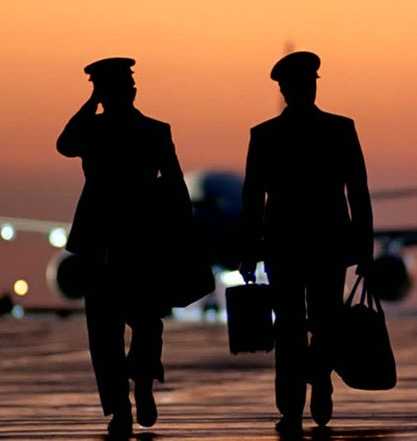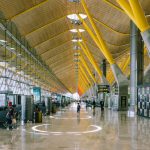Controlled Rest on the Flight Deck – Report
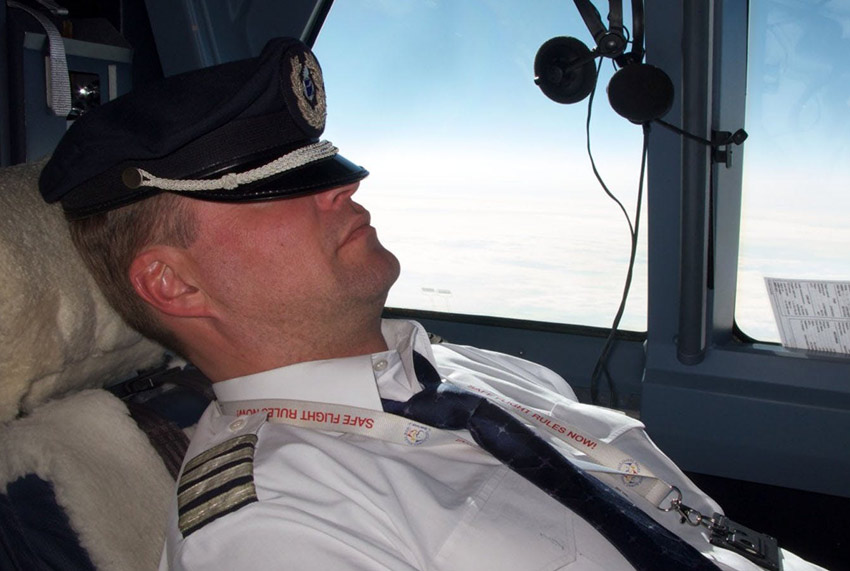
The Flight Safety Foundation (FSF) has released a report on the best practices for allowing controlled rest on the flight deck. The report was created by an industry Fatigue Countermeasures Working Group which includes pilot union labor representatives, researchers and scientists from Clockwork Research, NASA Ames Research Center, Washington State University, fatigue safety managers from commercial aircraft operators, and fatigue and human performance research organizations.
Fatigue and Circadian Phase
ICAO defines fatigue as: A physiological state of reduced mental or physical performance capability resulting from sleep loss, extended wakefulness, circadian phase, and/or workload (mental and/or physical activity) that can impair a person’s alertness and ability to perform safety-related operational duties.
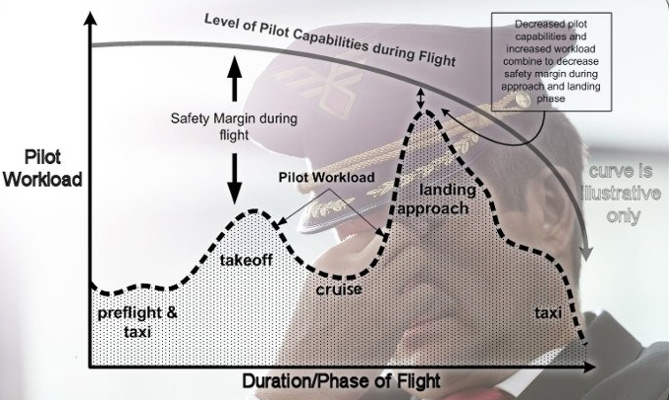
Circadian phase is the timing of the internal circadian body clock that synchs body phases to promote wakefulness during the day and sleepiness during the night.
Fatigue can arise when trying to maintain wakefulness at night, especially during the bodies window of circadian low (WOCL), or as a result of insufficient sleep attempted during the day.
The body’s circadian clock is informed primarily by light exposure. Traveling to different time zones can cause the internal circadian body clock and the external light environment to get out of synch.
Aviation Fatigue Risk Management
Aviation regulators are increasingly requiring operators to go beyond the minimum of complying with flight and duty time limitations. Increased requirements include demonstration of effective fatigue risk management (FRM) within a safety management system (SMS), or with a dedicated fatigue risk management system (FRMS). The necessary controls that operators are encouraged to have in place include:
- Fatigue management training for crew, schedulers, and managers
- Crew fatigue reporting system
- Fatigue–risk-based scheduling rules
- A fatigue safety action group (FSAG) that coordinates the identification, assessment, and mitigation of fatigue risks, and continuously monitors and evaluates the effectiveness of the fatigue risk management controls and FRMS
Addressing Fatigue While Flying
The Flight Safety Foundation report recognizes that in spite of the best efforts of flight crew and operators that circumstances will arise which cause flight crew to experience unanticipated elevated fatigue in-flight.
When a crew member is fatigued while in flight the report recommends counter measures that include strategic use of caffeine and activity breaks as well as using crew resource management (CRM) principles to manage fatigue, such as:
- Communicating openly about individual fatigue levels
- Verbalizing all actions
- Not accepting changes to the flight plan
- Workload management
- Configure and stabilize the aircraft early in the approach phase of flight
- In operations that are allowed to utilize controlled rest that the flight crew member avails themselves of this
What is Controlled Rest?
ICAO defines controlled rest as: A short sleep opportunity used as an effective mitigation strategy to be used as needed in response to unanticipated fatigue experienced during flight operations.
Controlled rest should not be used as a planned strategy to extend flight crew duty periods.
The basic principles of controlled rest include:
- It should be considered a safety net
- The FSAG should be able to monitor the use of CR on the flight deck to evaluate whether existing mitigation strategies are adequate; crew reports are encouraged
- It should only be used on flights of sufficient length so that it does not interfere with required operational duties
- It should only be used during low workload phases of flight
- It should not be used as a method for extending crew duty periods
- Procedures for CR on the flight deck should be published and included in the flight operations manual
Controlled Rest is Different From In-Flight Rest
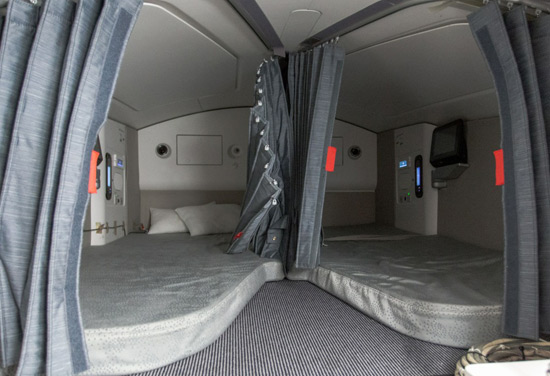
In-flight rest is planned before a flight and occurs when flight crews are augmented with additional crew members. In-flight rest involves crew members taking turns leaving the flight deck to rest and sleep in designed areas on the airplane.
Considerations for Using Controlled Rest
Crew Should Have Adequate Sleep Before Flight
Studies have found that controlled rest can be used to reduce but not eliminate fatigue. Flight crew should aim to get adequate sleep before duty to better manage fatigue and reduce the need for using controlled rest.
There Should Be a Minimum Recovery Period of 20 Minutes
A minimum recovery period should be planned following a controlled rest to account for sleep inertia.
Use Safeguards for the Alertness of the Non-Resting Pilot
Before controlled rest is used, flight crew should have an open discussion about alertness levels, to determine whether/when controlled rest will be taken. When controlled rest is used it is essential to ensure the non-resting pilot is alert.
Resting Pilot Should be Seated Comfortably
Studies of naps on flight decks have shown sleep can be difficult to obtain. Impediments to sleep should be considered as well as additional accommodates such as an eye mask or pillow.
Recuperative Value of Naps, and the Severity of Sleep Inertia, Are Variable
Research has shown that the length, timing, and depth of a nap can influence sleep inertia severity and duration. The findings show that not all naps taken during controlled rest are equivalent in terms of sleep efficiency, alertness benefits, and sleep inertia. It is important to provide pilots with controlled rest training describing how napping varies.
Controlled Rest Not Yet Legal in United States Commercial Operations
Regions and countries where regulators permit controlled rest for some or all operators include: Australia, Bolivia, Canada, China, Europe, Israel, New Zealand, Turkey, and the United Arab Emirates.
In the United States controlled rest is permitted by the Coast Guard and the Air Force, but the Federal Aviation Administration (FAA) has not yet granted use of controlled rest procedures. The FAA considered controlled rest when the latest rest and duty rules were developed in 2010, but it was excluded from the final regulations.
FAA Advisory Circular 120-100 (FAA, 2010, page 11) states:
“Although a number of foreign air carriers authorized in-seat cockpit naps during flight, the FAA does not authorize such in-seat cockpit naps.”
Greg started his professional pilot journey in 2002 after graduating from Embry Riddle. Since that time he has accumulated over 8,000 hours working as a pilot. Greg’s professional experience includes flight instructing, animal tracking, backcountry flying, forest firefighting, passenger charter, part 135 cargo, flying for a regional airline, a national low cost airline, a legacy airline, and also working as a manager in charge of Part 135 and Part 121 training programs.

